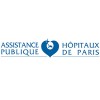SorAfenib Versus RADIOEMBOLIZATION in Advanced Hepatocellular Carcinoma (SARAH)
Liver Carcinoma

About this trial
This is an interventional treatment trial for Liver Carcinoma focused on measuring Liver, HCC, Liver, interventional procedures, Liver, randomized studies, Liver, targeted therapy, Liver, RADIOEMBOLIZATION
Eligibility Criteria
Inclusion Criteria:
- Histological or cytological diagnosis or meet the AASLD criteria for diagnosis of HCC and at least one uni-dimensional lesion measurable according to RECIST criteria by CT-scan or MRI
- Adult over 18 years old and estimated life expectancy over 3 months
- Patient with advanced HCC according to BCLC staging system (stage C) with or without portal vein thrombosis, not eligible for surgical resection, liver transplantation nor radiofrequency ablation OR patient with progression or recurrence of HCC after surgical or locoregional treatment not eligible for surgical resection, liver transplantation nor radiofrequency ablation OR patients in whom chemoembolisation has failed after two courses (patients who have received only one course of chemoembolisation are eligible if the failure of the first round shows that a second round will have no more impact; patients who have received more than two courses of chemoembolisation are still eligible if the arterial network is perfectly normal on a CT scan in the arterial phase). Failure is defined as the absence of an objective response after two courses of treatment in the treated nodule (objective response according to modified RECIST criteria and/or EASL criteria).
- ECOG performance status under or equals 1
- Adequate haematological function: Hb over or equals 9g/100mL, absolute neutrophil count over or equals 1 500/mm3, platelet count over or equals 50 000/mm3
- Adequate renal function; serum creatinine under 150μmol/L
- Bilirubin under or equals 50 µmol/L, AST or ALT uner or equals 5 x ULN, INR under or equals 1.5
- Liver cirrhosis Child Pugh A - B7
- written informed consent
Exclusion Criteria:
- Another primary tumour, with the exception of conventional basal cell carcinoma or superficial bladder neoplasia
- Extrahepatic metastasis
- Advanced HCC previously treated
- Advanced liver disease with Child-Pugh score over 7 or active gastrointestinal bleeding or encephalopathy or ascites refractory to diuretic therapy Women who are pregnant or breast feeding
- Allergy to contrast media
- Contraindication to hepatic artery catheterisation, such as severe peripheral vascular disease precluding catheterisation
- Psychiatric or other disorder likely to impact on informed consent
- Patient unable and/or unwilling to comply with treatment and study instructions
- Patient unable to swallow oral medications
Sites / Locations
- CHU Amiens #2
- CHU Angers #3
- CHRU Besançon Hôpital Jean Minjoz #21
- Hôpital Jean Verdier #25
- Hôpital Côte de Nacre #4
- Hôpital Antoine Béclère #29
- Hopital beaujon #1
- Henri Mondor #24
- CHU Dijon Hôpital Bocage #22
- CHU Grenoble #5
- Hôpital Edouard Herriot #6
- Lyon La croix Rousse #27
- Institut Paoli Calmettes #7
- CHU Marseille Hôpital La Timone #23
- Hôpital Saint Eloi #8
- Hôpital de Brabois #9
- Hotel Dieu #10
- Hôpital de L'Archet #11
- Hôpital Européen Georges Pompidou #13
- Hôpital Haut Leveque #14
- CHU Poitiers La Milétrie
- CHU Robert Debré #28
- CHU Saint Etienne Hôpital Nord #17
- Hôpital de Hautepierre #18
- Paul Brousse #19
- Institut Gustave Roussy #20
Arms of the Study
Arm 1
Arm 2
Active Comparator
Active Comparator
sorafenib group
radioembolization group
Patients will receive continuous oral treatment with 800 mg of sorafenib daily (Nexavar, Bayer HealthCare Pharmaceuticals-Onyx Pharmaceuticals). Treatment interruptions and dose reductions (to 400 mg once daily) will be permitted for drug-related adverse effects. At the discretion of the investigator, the dose may be re-escalated to after the resolution of the adverse event.
The first step will check patient eligibility and prepare conditioning by performing selective mesenteric and hepatic angiography (to document the arterial tumor supply and to occlude extrahepatic vessels) and 99mTc-macroaggregated albumin scintigraphy. The second step is RADIOEMBOLIZATION therapy. One to two weeks after patient eligibility and conditioning, treatment is performed with SIR-Sphere (SIRTEX Medical Ltd.,Lane Cove,Australia).
Outcomes
Primary Outcome Measures
Secondary Outcome Measures
Full Information
1. Study Identification
2. Study Status
3. Sponsor/Collaborators
4. Oversight
5. Study Description
6. Conditions and Keywords
7. Study Design
8. Arms, Groups, and Interventions
10. Eligibility
12. IPD Sharing Statement
Learn more about this trial
